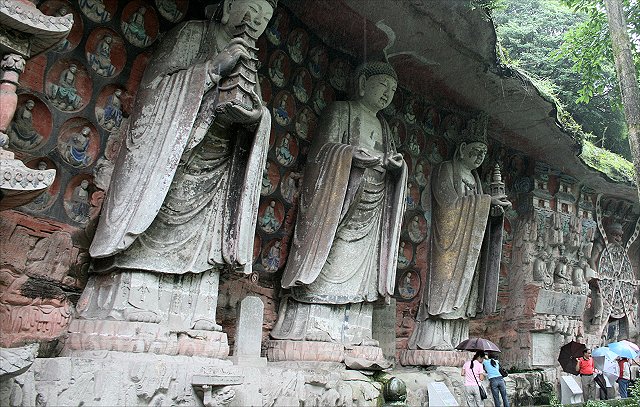
Within the region around Chongqing, Dazu is famous for its historical rock carvings; among the Dazu rock carvings, the Southern Song sculptures of Baodingshan are the best preserved; and in the middle of the Baodingshan picture program, a hellish panorama stretches for twenty meters along the thirteen-meter-high cliff face. A local tantric Buddhist by the name of Zhao Zhifeng (b. 1159) devoted his life to this elaborate monument which is now a World Heritage Site, and one of the reasons Baodingshan is such a useful site is because Zhao Zhifeng divided the cliff face into particular themes such as Huayan Buddhism, visions of the Pure Land and, most significantly for us, the courts of hell. Uniformly seated in a row, the ten hell kings preside over all manner of physical retribution as sinners are beaten, boiled, crushed and dissected. The inscribed texts warn the viewer to embrace virtue and study the dharma lest this nightmare become realized for them. And amidst these horrors stands a life-sized Zhao Zhifeng himself with his eyes closed and his hand pointing back toward the carnage. On either side of him, an inscribed text repeats the basic motif of these hell scrolls:
The heavens are broad, and the hells are vast;
If people do not put their faith in the Buddha's words, their minds will know only suffering.
When my path leads into suffering, I seek joy;
But when the living are in the midst of joy, they are [really] seeking suffering.
The whole cliff face reads like a morality play with every hell duly labeled and warnings inscribed wherever there is free space on the stone. Like the hell scrolls, the cliff also reflects its time and place, or as Angela Falco Howard summarizes:
In the hell reliefs, sponsors and carvers chose to interpret the text in a manner most conducive to a predominently rural audience. Machinery such as the treadle-operated tilt hammer and the wheeled saw were commonly used in Sichuan. The men and women selected to portray the sinnerrs are dressed as in Song costume; the explicitness of their behavior (becoming drunk, being tempted by the flesh) formed part of the existential experience of viewers. In other words, viewers might have recognized their very contemporaries among the carved images. The emphasis placed on abstinence, so vividly portrayed at eye level, suggests the frequency of such excesses as well as the clergy's desperate efforts to restrain them.
While many of these tools and vices are not actually specific to this region, Howard is no doubt correct in that the familiarity of tool and vice may have increased the veracity of the overall message, even when those tools were now being used to horrific ends and those vices were now only superficial joys that, in Zhao Zhifeng's words, actually sought out suffering.
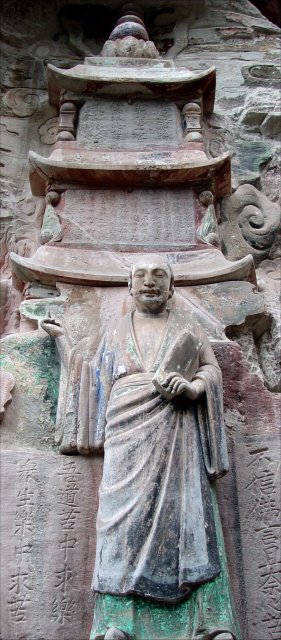
Zhao Zhifeng
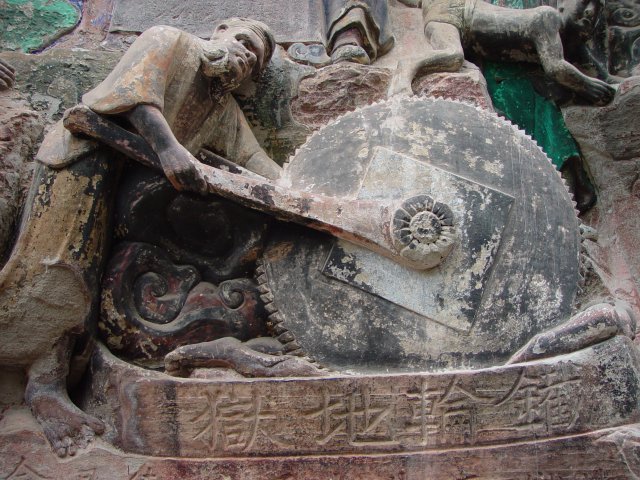
Hell of the iron wheel
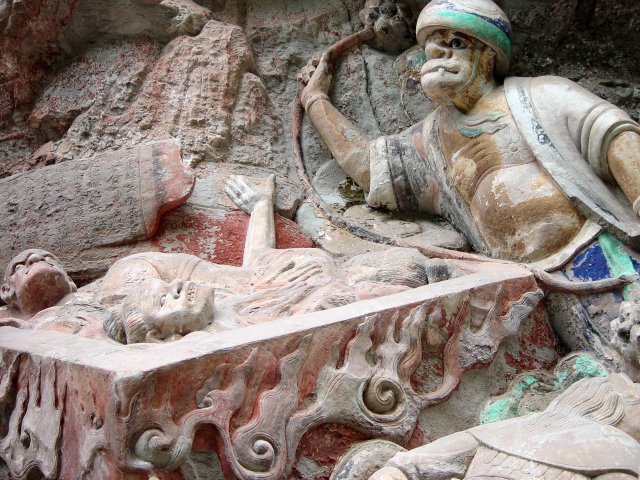
Hell of excrement
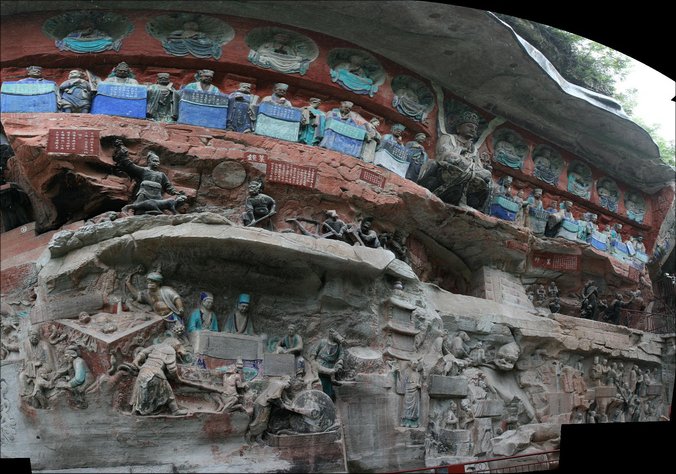
A panorama of hell at Baodingshan
(The hell kings are the upper tier of blue seats beneath a row of buddhas,
and Ksitigarbha is enthroned in the middle.)